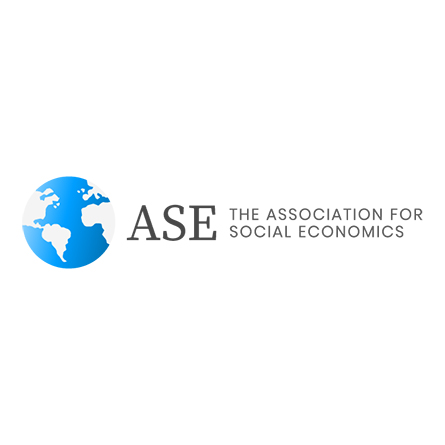
Professor and former student win award for best article in Review of Social Economy
Associate Professor of Economics Mark Stelzner and Daniel Taekmin Nam ’21 have won the Association for Social Economics’ 2022 Helen Potter Award for best article in the Review of Social Economy by a promising scholar of social economics.
Stelzner and Nam wrote the paper, “The big cost of big medicine—calculating the rent in private healthcare,” when Nam was a student at Connecticut College. The Potter Award includes a $500 prize and a plaque.
“As a country, the United States spends significantly more on healthcare than other advanced industrialized countries, and Americans have comparably worse health outcomes. Both are developments of the last four decades,” Stelzner and Nam wrote in the paper’s abstract. “We look at how change in antitrust and patent law and thus change in market power in the largest four subsectors of healthcare—hospitals, physician groups, prescription drugs and net medical insurance—have contributed to the increasing cost of medical care in the United States. We show that the annual rent—the degree to which health care is overpriced as a result of market power—was between 2.47 and 4.30 percent of GDP in 2016—truly a big cost for big medicine.”
Stelzner explained, “This represents as much as $805 billion in 2016 alone. Otherwise said, if antitrust laws on competition between companies stayed the same as in 1980, and thus market power did not increase, Americans would have paid as much as $805 billion less in 2016 for the same quantity and quality of healthcare.”
In an email announcing the win, the award selection committee wrote, “This paper examines an issue which is very important for social economy, the determinants of the price of health care, what may be justifiably considered to be a basic social need and one which is of particular importance for lower-income groups.”
Nam said Stelzner’s public finance class sparked his curiosity about the privatized U.S. healthcare system. Although he had no prior formal research experience, “Professor Stelzner was great in providing detailed guidelines on how to go about the research,” Nam said.
Nam and Stelzner conducted their research in the summer and fall of 2018 with funding from ConnSSHARP (Connecticut College Social Sciences, Humanities, Arts, Research Program). The duo began by reviewing existing topical literature to see what they could add to the field, then gathered international data to make comparisons. They used a model to calculate how much the U.S. healthcare system was overcharging compared to countries with similar socioeconomic backgrounds.
“Studying the healthcare sector with Daniel was fascinating. We essentially found that the reason why we pay so much for healthcare is because laws have been remade to make the industry very profitable for those in charge while extremely expensive for all and inaccessible for many Americans,” Stelzner said.
The solution, according to Nam and Stelzner, is to limit the market power of healthcare providers, as other developed countries have, with a “Medicare for all” option in which the government takes over the role of medical insurer. The government could then use its power to reduce healthcare costs and pass those lower prices on to citizens.
“Countries that are well developed, such as the U.S., usually don’t have big problems in further macroeconomic growth,” Nam explained. “But internally, we see some serious signs of deepening inequality between the rich and the poor. For countries to develop as a whole, it is important to reduce this inequality. To better help people and policymakers understand what deepens this wealth disparity is what I am passionate about.”
Nam is currently in his last semester of a master’s in economics at Yonsei University in Seoul, South Korea, and is waiting on admission decisions for Ph.D. programs in economics in the U.S.
Stelzner joined Conn College in 2015 and has recently been working on better understanding income inequality in the United States. He specializes in inequality and the political underpinnings of the economic system.

